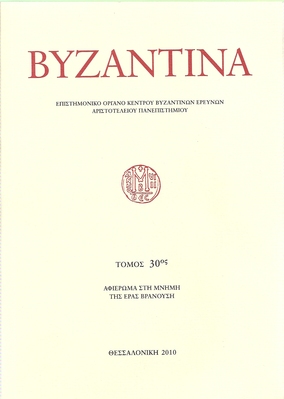Η εφαρμογή του φλωρεντίνου "όρου" στο ελληνικό αρχιπέλαγος : η περίπτωση της βενετοκρατούμενης Κρήτης και της ιπποτοκρατούμενης Ρόδου
Part of : Βυζαντινά : επιστημονικόν όργανον Κέντρου Βυζαντινών Ερευνών Φιλοσοφικής Σχολής Αριστοτελείου Πανεπιστημίου ; Vol.16, No.1, 1991, pages 73-115
Issue:
Pages:
73-115
Parallel Title:
The implementation of the florentine union in Crete under the venetians and in Rhodes under the knights
Author:
Abstract:
The writer examines the consequences of the union of the Churches, as decided at the Council of Florence (6 July 1439), on two Latin-occupied islands, Crete and Rhodes. From a comparative study he draws the following conclusions.1. On neither island did the Union have any effect on the common people. Secular authority was used to implement it. Neither the Venetians nor the Flospitallers wanted religious disturbances, which could easily turn into a political issue.2. On Crete, the Venetian authorities required a purely formal statement regarding the Union of the Churches from those Orthodox who were to be ordained priests. They had dismissed the Orthodox bishops on the island, and replaced them with their own loyal prelates, thus downgrading the church hierarchy. The Orthodox Church’s property was also subsumed under that of the Latin Church. On Rhodes, the Knights retained the Orthodox Metropolitan and the hierarchy of church officials; but they required the religious leader’s assurance that he would implement the decisions of the Council of Florence. This commitment modulated the terms of the agreement of 1 July 1474 between the island’s Latin Archbishop and Orthodox Metropolitan. On 7 June 1513, Pope Leo X issued a bull introducing modifications into the agreement in the Metropolitan’s favour.3. The Knights were more tolerant than the Venetians and willing to compromise. The local Orthodox population was thus more inclined to join them in the struggle against the Turks.The Appendix to this study, presents hitherto unpublished documents from the National Library of Malta and the Secret Archives of the Vatican.
Subject (LC):
Notes:
Περιέχει παράρτημα και 2 παρένθετους πίνακες




